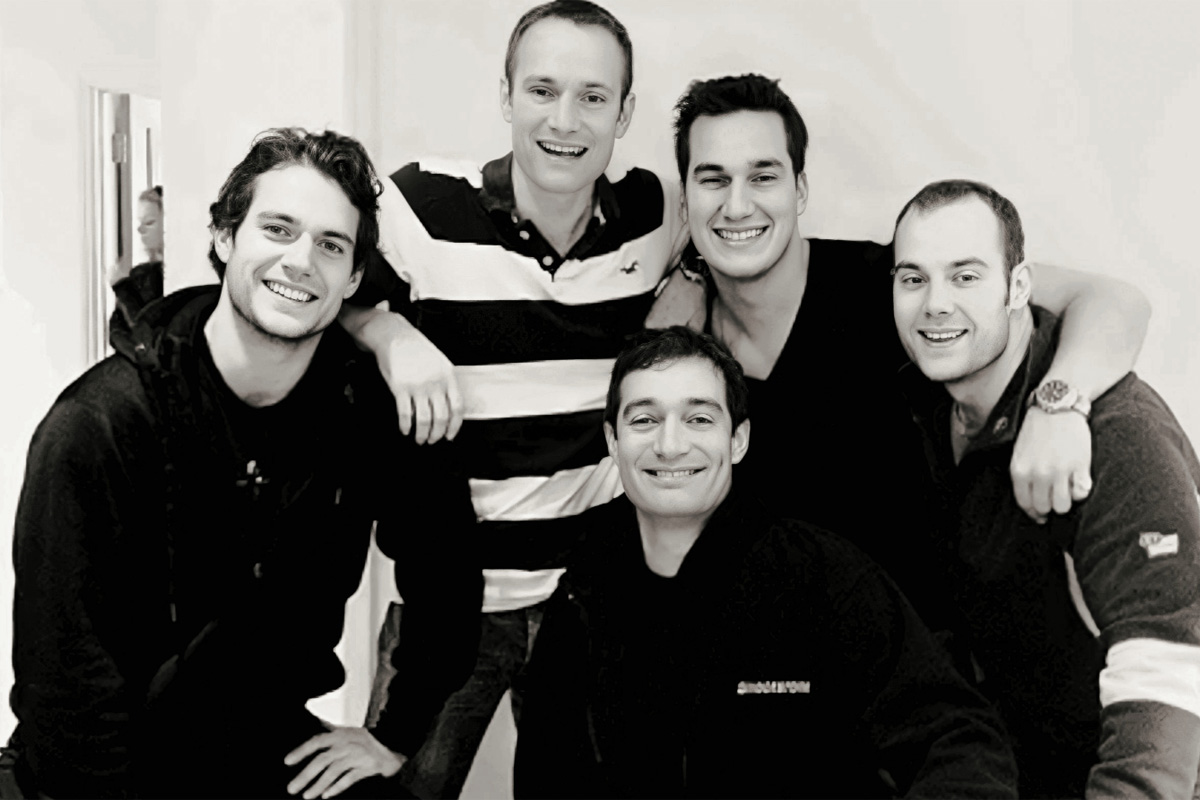What does it mean to be handsome? The concept of handsomeness goes beyond mere physical appearance and delves into a deeper understanding of attractiveness that transcends cultural and individual differences. In this article, we explore the multifaceted definition of handsomeness, encompassing both external and internal qualities that contribute to a person's overall appeal.
Attractiveness is a subjective concept that has fascinated humans for centuries. While beauty standards may vary across cultures, the idea of handsomeness remains a universal pursuit. This article aims to provide a comprehensive understanding of what it means to be handsome, supported by scientific research, cultural insights, and expert opinions.
As we navigate through the complexities of modern aesthetics, it becomes crucial to redefine handsomeness in a way that aligns with contemporary values. By examining both physical and non-physical attributes, we can gain a more holistic perspective on what truly makes someone handsome.
Read also:Pablo Escobar Wife The Untold Story Of The Woman Behind The Kingpin
Table of Contents
- Biography of Handsomeness
- Physical Traits That Define Handsomeness
- Non-Physical Traits Contributing to Handsomeness
- Cultural Perspectives on Handsomeness
- Scientific Research on Handsomeness
- Psychological Factors Influencing Handsomeness
- Fashion and Style in Handsomeness
- Media Representation of Handsomeness
- Handsomeness Through History
- Conclusion
Biography of Handsomeness
Historical Context
The concept of handsomeness has evolved significantly over time. In ancient civilizations, handsomeness was often associated with physical strength and heroic qualities. As societies developed, the definition expanded to include intellectual and emotional attributes.
Modern Interpretation
Today, handsomeness is perceived as a combination of physical attractiveness and inner beauty. It encompasses qualities such as confidence, kindness, and intelligence. This modern interpretation reflects a shift towards a more inclusive and holistic understanding of attractiveness.
| Attribute | Description |
|---|---|
| Physical Appearance | Facial symmetry, muscular build, and grooming habits |
| Personality | Confidence, empathy, and emotional intelligence |
| Cultural Influence | Variations in beauty standards across regions |
Physical Traits That Define Handsomeness
When discussing handsomeness, physical traits often take center stage. Research indicates that certain physical characteristics are universally perceived as attractive. These include:
- Facial symmetry
- Clear skin
- Strong jawline
- Defined cheekbones
According to a study published in the journal Evolution and Human Behavior, facial symmetry is one of the most significant predictors of perceived attractiveness. This preference may stem from evolutionary instincts that associate symmetry with good health and genetic fitness.
Non-Physical Traits Contributing to Handsomeness
Confidence
Confidence is a key non-physical trait that enhances handsomeness. People who exude self-assurance tend to be more appealing, as confidence often reflects inner strength and security.
Empathy
Empathy, the ability to understand and share the feelings of others, plays a crucial role in defining handsomeness. A study conducted by the University of California found that individuals who display empathy are perceived as more attractive by their peers.
Read also:Heidi Jofit The Ultimate Guide To Her Inspiring Journey And Achievements
Cultural Perspectives on Handsomeness
Cultural differences significantly influence perceptions of handsomeness. In some cultures, a rugged, masculine appearance is highly valued, while in others, a more refined and polished look is preferred. For instance, in East Asian cultures, smooth skin and a slim physique are often seen as desirable traits.
Scientific Research on Handsomeness
Scientific research provides valuable insights into the psychology of handsomeness. Studies have shown that certain physical traits, such as facial symmetry and clear skin, are universally attractive. Additionally, research highlights the importance of non-physical traits like confidence and empathy in determining overall attractiveness.
Psychological Factors Influencing Handsomeness
First Impressions
First impressions play a crucial role in how we perceive handsomeness. Studies suggest that people form judgments about attractiveness within milliseconds of meeting someone. These initial impressions are often based on both physical and non-physical cues.
Self-Esteem
Self-esteem is closely linked to perceived handsomeness. Individuals with high self-esteem tend to project confidence and positivity, which enhances their attractiveness. Conversely, low self-esteem can negatively impact how others perceive them.
Fashion and Style in Handsomeness
Fashion and personal style contribute significantly to the perception of handsomeness. A well-groomed appearance and a tasteful wardrobe can enhance one's attractiveness. According to a survey conducted by the fashion industry, 80% of respondents believe that style plays a crucial role in defining handsomeness.
Media Representation of Handsomeness
The media plays a powerful role in shaping societal perceptions of handsomeness. Movies, television shows, and social media platforms often promote specific beauty standards that influence public opinion. While these representations can be influential, it is essential to recognize the diversity of attractiveness and avoid narrow definitions of handsomeness.
Handsomeness Through History
Throughout history, the concept of handsomeness has undergone significant changes. From the classical ideals of ancient Greece to the modern-day emphasis on individuality, each era has contributed to our understanding of attractiveness. By examining historical perspectives, we gain a deeper appreciation for the evolution of handsomeness.
Conclusion
In conclusion, handsomeness is a complex and multifaceted concept that encompasses both physical and non-physical attributes. While physical traits like facial symmetry and grooming habits play a role, qualities such as confidence, empathy, and self-esteem are equally important in defining attractiveness.
We encourage readers to embrace a broader understanding of handsomeness that values diversity and individuality. By recognizing the various factors that contribute to attractiveness, we can foster a more inclusive and compassionate society. Share your thoughts in the comments below and explore other articles on our website for more insights into the world of beauty and aesthetics.

